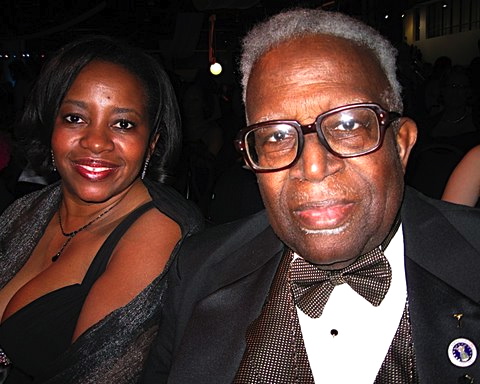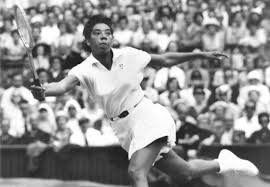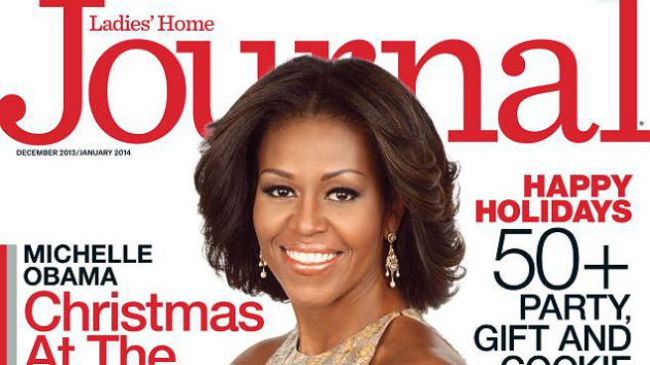by Yanick Rice Lamb | Dec 15, 2015 | Book Chapters |
CHAPTER 14 MAGAZINES AND CONSUMER LIFESTYLE: ESTEEM AND ENJOYMENT, INFLUENCE AND APPETITE As published in The Routledge Handbook of Magazine Research: The Future of the Magazine Form Yanick Rice Lamb The U.S. edition of Vogue magazine is a bible of consumptive behavior. Its pages, which may range from as few as 130 to more than 900 per issue, are filled with the gospel of Anna Wintour on everything from fashion to politics. While many magazines place five or more cover lines to gain attention on newsstands, Vogue used only three on the cover of its annual Power Issue in March 2009. That is all the world’s leading fashion magazine needed with its iconic cover girl and a main cover line that boldly stated, “MICHELLE OBAMA: The First Lady the World’s Been Waiting For.” The other two cover lines read: “Spring Fashion Special: Every Look That Matters” and “Super Powers! Queen Rania of Jordan, Carla Bruni-Sarkozy, Melinda Gates.” It is the perfect combination. Obama is wearing a sleeveless magenta silk dress by one of her favorite designers, Jason Wu, in a portrait that strategically showcases her much-debated toned arms,[1] shot by one of Vogue’s principal photographers, Annie Leibovitz,[2][1] at one of the nation’s landmark hotels, the Hay-Adams in Washington, D.C., for what Vogue describes as a “historic sitting” just before the first Inauguration of the first black president of the United States.[3] As Sammye Johnson and Patricia Prijatel note in The Magazine from Cover to Cover, “Magazines are lively and engaging societal resources, affecting the world around them and, in turn, being affected themselves by that world.”[4] A prime example of the...

by Yanick Rice Lamb | Jun 23, 2014 | Books |
Sibling rivalry was never really a problem for me, but all that changed when my father stood me up for Thanksgiving. On the eve of Turkey Day, I developed a case of Obama envy. You’ve heard of “outside children?” Well, President Barack Obama has an outside family. He has two dads: Barack Hussein Obama Sr. and a surrogate, William Radford Rice, the father he “stole” from me during his first run for the White House. Daddy Rice helped him get there. Like any good father, he always believed that Barack was “The One.” He talked about him incessantly and told everyone he would become the first black president of the United States. Daddy had been saying this long before Barack’s run for Congress, breakout speech at the Democratic National Convention in 2004 and radio rebuttal to one of President Bush’s weekly radio spiels. After Barack blindsided Hillary Clinton and John Edwards during the Iowa Democratic Caucuses in early 2008, it was on. You couldn’t tell Daddy a thing about any other presidential candidate. Daddy loved to debate, and Barack had given him more ammunition to shoot holes into any political argument. It was all Barack, all the time. He was never home when I called him, especially after he helped to open my brother Barack’s campaign office in Albany, Georgia. Small in stature at 5 feet, 4 inches, Daddy was gifted with an outsized personality, a giving, enthusiastic heart, and a warm, ready smile. Although he was pushing 80, no one worked harder campaigning for Barack in Southwest Georgia. Fellow campaign volunteers described him as a tireless worker...

by Yanick Rice Lamb | Jun 14, 2014 | Books, My Work, Uncategorized |
“I knew that I was an unusual, talented girl through the grace of God. I didn’t need to prove that to myself. I only wanted to prove it to my opponents.” –Althea Gibson Born to Win is the first and only fully authorized biography of the late great Althea Gibson, the first African American to break the color line in tournament tennis. Cowritten by Frances Clayton Gray, who was Gibson’s confidante and caretaker and is now executor of her estate, and journalist Yanick Rice Lamb, this authorized biography sheds new light on Gibson, from her childhood in Harlem and her ten-year reign as champion of the all-black American Tennis Association to her historic 1950 debut at Forest Hills and her momentous victories of 1957 and 1958, when she swept both Wimbledon and the U.S. Open. This riveting account reveals how Gibson distinguished herself as a champion in a long and diverse athletic career, helping to pave a path for such modern-day sports phenomena as Tiger Woods and Venus and Serena Williams. A strong-willed child who skipped school frequently and had a reputation for being a tough girl, Gibson nevertheless developed a solid work ethic and a desire for independence–and was a natural athlete to boot. You’ll follow her as she picks up a tennis racket for the first time and goes on to compete in her first tournament, setting the stage for a remarkable journey. At 5 feet 11, Gibson had the height, speed, and reach to dazzle a crowd by returning shots that seemed guaranteed to get away, and she devised brilliant strategies to zero in on her...

by Yanick Rice Lamb | Jun 14, 2014 | Book Chapters |
For more than a century, the “Seven Sisters” have dominated the women’s magazines category (Johnson and Prijatel, 2007). They have also been leaders in magazine publishing overall, with some titles ranking in the top 10 for circulation and advertising revenue. The eldest sister, McCall’s, was born as The Queen: Illustrating McCall’s Bazaar Glove-Fitting Patterns in 1870 (Endres and Luech, 1995). Her siblings appeared from the1880s to 1930s: Ladies Home Journal, Good Housekeeping, Redbook, Better Homes and Gardens, Woman’s Day, and finally Family Circle. Over the years, the magazines have undergone periodic makeovers, as feminists and others questioned their relevance and historical focus on homemaking especially during the women’s movement of the 1960s and 1970s. One of the most severe makeovers led to the death of McCall’s, which morphed into Rosie the Magazine in 2001 to compete with upscale women’s magazines such as O the Oprah Magazine and Martha Stewart Living. In November 2000, comedian and talk-show host Rosie O’Donnell signed an agreement with Gruner & Jahr to be a partner in what was originally conceived as Rosie’s McCall’s (Kuczynski, 2001). By the end of 2002, Rosie had ceased publication amid a flurry of counter-suits (McCafferty, 2003). In light of one of the most radical eras of media transition, this study will analyze whether the survivors are keeping up with technological advances to serve readers and remain competitive with younger women’s magazines. It will seek to determine if the magazines are effectively using websites, cell phones, and iPads — the primary tools at the center of this digital transformation. Effective use of these tools can impact a media company’s success,...




Recent Comments